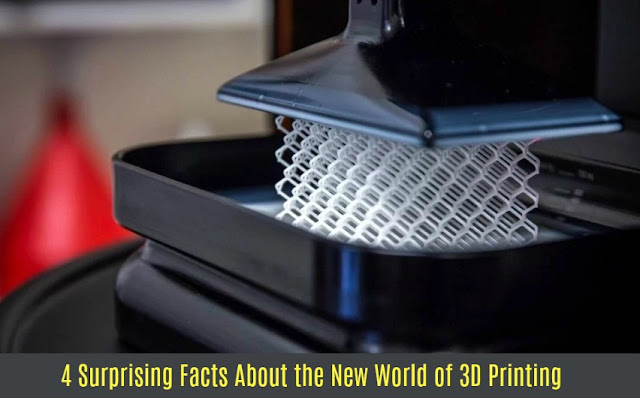4 Surprising Facts About the New World of 3D Printing? 3D Printer Facts?
The Industrial Revolution 4.0.is here, and the technology associated with it is transforming industries and businesses left, right, and center. One of those technologies is 3D printing which serves to convert your thoughts into objects and reconstruct your concepts into printable items.
3D printing is considered additive manufacturing technology as it builds an item one layer at a time. These terms (3D printing and additive manufacturing) are growingly used as synonyms for the same process. The importance of this is that all 3D printed goods are created using only the necessary raw materials — there is nothing left over.
Whether you are new to the world of 3D printing or are a long-time fan, who wants to know what the recent developments are, read on for four surprising facts about the new world of 3D printing.
4 Surprising Facts About the New World of 3D Printing? 3D Printer Facts?
1. There are over 30 file formats for 3D printing:
Yes, you read that correctly. Today, there are over 30 different file formats for 3D printing, and that number is only set to continue increasing.
The file format is responsible for holding the data (such as the shape and the geometry) about your 3D model and then giving that information to a 3D printer so that your object can be created. Incredibly, some of the newer file formats can store more advanced data such as color, texture, and materials.
The critical thing to know is that not all 3D printing software can read all of the file formats. Generally, the most commonly used ones are STL, OBJ, and VRML.
You can check with a printing company in California for your reference.
2. There are several reasons why it is exploding in popularity:
The reason that 3D printing is becoming more and more in demand in all industries, all around the globe isn't merely because it is a cool technology (although that is indeed true); there are also a wide array of benefits that it brings.
One of the most significant benefits is that 3D printing plays an essential role in the process between prototyping and full-scale production. This provides companies and firms of all classifications the possibility of experiencing their product prototype in real life before having to commit to full-scale production. In other words, 3D printing is a more cost and time-efficient way of testing a design or product.
Additionally, 3D printing technology helps businesses create higher quality products consistently while also decreasing material wastage.
3. It can potentially solve all production line-related issues:
There are many common business problems that 3D printing can solve, but some of the most exciting involve issues within the production line. Let's say that you have a portion of your production line that is frequently failing, or you have items that unfortunately have a high scrap rate; in these two scenarios, 3D printing can drastically improve the situation.
This technology has already advanced to the point where it can generate complicated channels as individual structures, while also reducing the need for multiple assembly points. This already vastly reduces the risk of performance issues that occur when there are faulty parts.
Moreover, 3D printing makes it likely that manufacturers of all kinds can manufacture production line segments that used to be unrealistic or impossible to create, due to their form or material. This is notable for companies that aspire to both develop and demonstrate new ideas and products.
4. Many industries have already been impacted by 3D printing:
For some people, 3D printing is a relatively new technology in their lives. This is why they may be a little surprised to find out how many industries have already been significantly impacted by its implementation. At its very core, 3D printing formulates increased opportunities for all enterprises to meet their potential.
As it delivers an agile development process, 3D printing has transformed the manufacturing industry. For example, 3D printing has led to increased custom-built products, more mass customization, new design opportunities, and a reduction in setup and development costs.
Other industries it has affected include the healthcare industry where it is spurring change and innovation and the automotive industry where it is reshaping the product cycle.
In the aerospace industry, 3D printing is being utilized to enhance innovations and capabilities, while the world of electronics has been revolutionized with the knowledge that 3D printing can manufacture parts. You can refer to that 3d printing in Los Angeles, CA!
Have you or your company ever utilized 3D printing? If so, what did you use it for and how was your experience? If not, is it something you can see your firm or industry benefiting from? Why or why not?
Let us know your thoughts concerning this topic in the comments below!


No comments